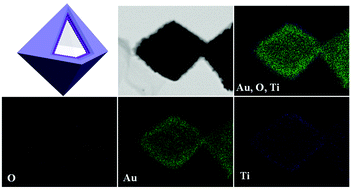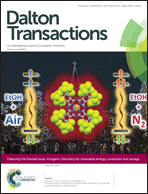Au@TiO2 double-shelled octahedral nanocages with improved catalytic properties†
Abstract
A novel and facile strategy has been successfully developed to synthesize uniform gold@titanium dioxide octahedral nanocages (Au@TiO2), which have a well-defined double-shelled structure with Au as the internal shell and TiO2 as the external shell. The unique Au@TiO2 double-shelled octahedral nanocages were elaborately fabricated by a Cu2O-templated strategy combining with spatially confined galvanic replacement. The formation process of these delicate hierarchical octahedral architectures is discussed in detail. The catalytic performance of the Au@TiO2 double-shelled octahedral nanocages was investigated using the reduction of 4-nitrophenol as a model reaction. The mesoporous structure of both the Au and TiO2 shells provides direct access for the reactant molecules to diffuse and subsequently interact with the Au shell. This novel catalyst shows excellent and stable activity for the catalytic reduction of 4-nitrophenol, which can be recycled for ten successive cycles of the reaction with a conversion efficiency of more than 90%. The superior catalytic activity attributes to mesoporous double shells, enhanced synergistic effects between the Au and TiO2 shells and the unique properties of the octahedral structure. More importantly, the as-obtained Au@TiO2 double-shelled octahedral nanocages also show potential applications in solar cells, organocatalysis and water splitting.


 Please wait while we load your content...
Please wait while we load your content...